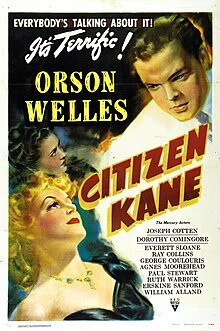The Premiere of Citizen Kane: A Cinematic Masterpiece
In the annals of film history, few movies have left as indelible a mark as “Citizen Kane.” Premiering on May 1st, 1941, in New York City, this groundbreaking film directed by Orson Welles has consistently been hailed as one of the greatest films ever made. With its innovative narrative structure, mesmerizing cinematography, and compelling story, “Citizen Kane” has captivated audiences and critics alike for decades.
A Revolutionary Narrative Structure
One of the most striking aspects of “Citizen Kane” is its unique narrative structure. Rather than following a linear timeline, the film unfolds through a series of flashbacks and interviews as various characters recount their experiences with Charles Foster Kane, the enigmatic newspaper magnate. This non-linear storytelling technique was groundbreaking for its time and has since become a staple in modern cinema.
Welles, who also played the titular character, masterfully weaves together different perspectives and timelines to paint a complex portrait of Kane’s life. Through these fragmented narratives, the audience gradually uncovers the layers of Kane’s persona, from his humble beginnings to his meteoric rise to power and subsequent downfall.
Innovative Cinematography and Visual Techniques
Aside from its narrative structure, “Citizen Kane” also revolutionized the art of cinematography. Welles, along with his cinematographer Gregg Toland, employed numerous innovative techniques that are still studied and emulated by filmmakers today.
One such technique is the use of deep focus, where both the foreground and background of a shot are in sharp focus. This technique allows the audience to fully immerse themselves in the scene and take in every detail. The iconic shot of young Kane playing in the snow while his parents discuss his future is a prime example of this technique.
Welles also utilized low-angle shots and dramatic lighting to enhance the visual impact of the film. These techniques, combined with the meticulous set design and attention to detail, created a visually stunning experience that was ahead of its time.
The Legacy of “Citizen Kane”
Despite its initial mixed reception at the box office, “Citizen Kane” has since gained widespread acclaim and recognition. Its impact on the film industry cannot be overstated, as it paved the way for future filmmakers to push the boundaries of storytelling and visual techniques.
The film’s exploration of themes such as power, wealth, and the pursuit of happiness resonates with audiences to this day. Its examination of the corrupting influence of power and the emptiness that can accompany material success remains relevant in our modern society.
Furthermore, “Citizen Kane” has influenced countless filmmakers and artists across various mediums. Its innovative techniques and storytelling methods have become ingrained in the fabric of cinema, inspiring generations of filmmakers to think outside the box and challenge conventional norms.
References:
3. Roger Ebert – Citizen Kane Review
In conclusion, the premiere of “Citizen Kane” on May 1st, 1941, marked a pivotal moment in film history. Orson Welles’ visionary direction, coupled with the film’s innovative narrative structure and groundbreaking cinematography, solidified its place as a cinematic masterpiece. Its enduring legacy and continued influence on filmmakers serve as a testament to its timeless brilliance.

